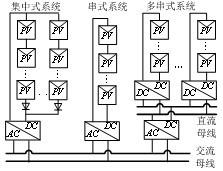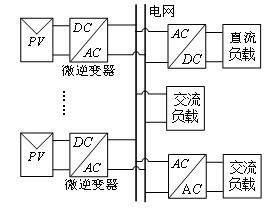The energy crisis and environmental pollution problems have become increasingly serious, prompting all countries to develop new renewable energy sources. Solar energy has inexhaustible inexhaustible, clean and pollution-free, geographically-free advantages, and vigorously develop and promote solar photovoltaic power generation technology is an effective means to solve the current energy and environmental crisis.
The Building Integrated Photovoltaic (BIPV) system is the most advanced and most promising high-tech green and energy-saving building by installing photovoltaic modules on the surface of buildings to achieve the perfect combination of solar photovoltaic power generation and construction. In BIPV system, PV modules are combined with buildings. PV modules do not occupy additional floor space. They are particularly suitable for urban buildings with limited land resources. The global building energy consumption accounts for more than one-third of the world's total energy consumption. BIPV technology is used. It is possible to transform buildings from energy-consuming to functional, which will effectively alleviate the huge contradiction between urban anti-war and energy supply, create a low-energy, high-comfortable and healthy living environment, and achieve sustainable development of urban buildings; on the other hand, At present, the production costs of photovoltaic modules are relatively high. The cost of solar photovoltaic power generation is much higher than that of conventional energy sources, which greatly limits the development and application of photovoltaic power generation systems. Using BIPV systems, organic integration of photovoltaic modules and building surface materials can be greatly reduced. The cost of photovoltaic power generation reduces the cycle of return on investment.
In the BIPV system, the installation of photovoltaic modules first involves the installation angle and installation direction of the photovoltaic modules. The installation angle is the tilt angle of the photovoltaic modules. The selection of the tilt angle is directly related to the power generation efficiency of the photovoltaic modules. In the same panel, the amount of radiation received at different installation angles is not the same. Due to the problem of orientation of each wall, the installation angle and direction of PV modules in different installation positions may not be exactly the same, which determines their power generation. The efficiency and instantaneous power generated cannot be guaranteed to be exactly the same.
Another key issue that needs to be addressed in BIPV systems is shadow occlusion issues. There are many reasons for the shadows, and there are random and systematic shadows. Shadows mainly come from the shelter of surrounding buildings and trees, mutual obstructions between various photovoltaic components, and clouds. The output characteristics of the PV module determine that the power generation efficiency will be greatly reduced after being partially blocked or shaded, which will have a significant impact on the power generation of the entire system.
In order to maximize the power generation efficiency of the BIPV system, it is necessary to adopt a suitable photovoltaic power generation system structure in addition to planning and designing as much as possible during installation.
Figure 1 is a schematic diagram of the electrical structure commonly used in current BIPV systems. In Figure 1, the centralized system first connects a large number of PV modules in series or parallel according to the designed voltage and power level, and then converts the DC power output from the PV array to AC power through a centralized inverter; The multi-series system and the multi-series system form a series of photovoltaic modules by connecting a plurality of photovoltaic modules in series. Each string is boosted by a DC-DC converter, and then outputs AC power via an inverter. In the above three systems, all photovoltaic modules are connected in series or in parallel, and the maximum power point of the system is tracked for the entire string. Therefore, it cannot be ensured that each component operates at the maximum power point, and the status of each photovoltaic module cannot be obtained either. Information; On the other hand, due to the different installation directions and angles of various components on the building surface, the power generation efficiency of each component is different from one another. Using centralized maximum power point tracking will greatly reduce the power generation efficiency of the system; when some components are obstructed At that time, the overall system's power generation efficiency will be severely reduced, greatly reducing the energy conversion efficiency of the system, and may even cause hot spots, leading to system damage.

figure 1
Micro-inverter technology proposes that the inverter be directly integrated with a single PV module, and each PV module be individually equipped with an inverter module with AC/DC conversion function and maximum power point tracking function, to directly convert the power generated by PV modules. AC power is used by AC loads or transmitted to the grid. The use of micro-inverters to replace traditional centralized inverters has the following advantages: (1) Ensure that each component operates at the maximum power point and has strong resistance to local shadowing; (2) Inverters and PV modules Integration, can achieve modular design, plug and play and hot swap, system expansion is simple and convenient; (3) Grid-connected inverter does not basically occupy the installation space, distributed installation is easy to configure, can make full use of space and adapt Application of different installation directions and angles; (4) High system redundancy and high reliability. Failure of a single module will not affect the entire system. Therefore, applying a micro-inverter to a BIPV system can be fully adapted to the application requirements of the building integrated photovoltaic power generation system, adapting to the installation angles and orientations of different photovoltaic modules, avoiding the influence of partial shadows on the system power generation efficiency, and realizing the maximum power generation efficiency of the BIPV system. Change. The structure of a photovoltaic power generation system using a micro-inverter is shown in Fig. 2.

figure 2
As shown in Fig. 2, the micro-inverter is directly connected with the photovoltaic module, and the power from the photovoltaic module is directly transmitted to the grid or used by the local load. Multiple micro-inverters are directly connected in parallel to the grid, and each micro-inverter is Photovoltaic modules have no influence on each other, and failure of a single module does not affect the entire system.
Combining the micro-inverter technology with power line carrier communication technology, the output power and status information of each micro-inverter and photovoltaic module can be collected through the AC AC bus, which is convenient for monitoring the entire system without additional Communication lines have no burden on the system connection, greatly simplifying the system structure.
Through the above analysis, the following conclusions can be drawn: The building integrated photovoltaic power generation system is an application direction with great development potential for photovoltaic power generation applications. However, the traditional centralized photovoltaic power generation system structure cannot meet the application requirements of the building integrated photovoltaic power generation system. The transformer technology can fully meet the application requirements of the building integrated photovoltaic power generation system and maximize the power generation efficiency.
The tungsten carbide rings are made up of the hardest metal on the earth. They are tougher than the titanium rings and are more durable than the gold rings. This kind of ring is often used as sealing, disc wheel, instrument and so on.
The Tungsten Carbide Roll and ring has good turning and no special lathe. The existing ordinary lathe can be used for rolling the roll ring. When turning, the cutter head can be made of hard alloy tool with high hardness.
Tungsten Carbide Rolls And Rings
Professional manufacturer of Tungsten Carbide Roll and ring in China, Wholesale Tungsten Carbide roll, Tungsten Carbide ring, Diamond roll and ring with low price, high quality.
Marie Jay's Metal Products Co., Ltd , http://www.mariejmetals.com